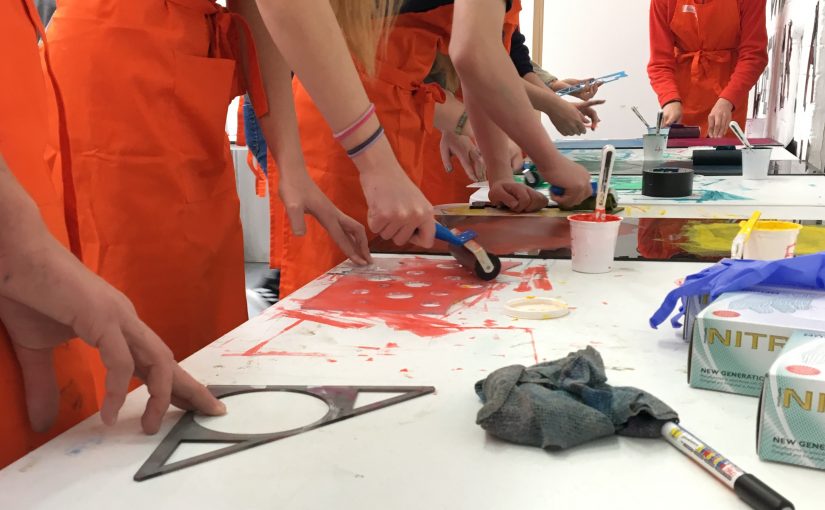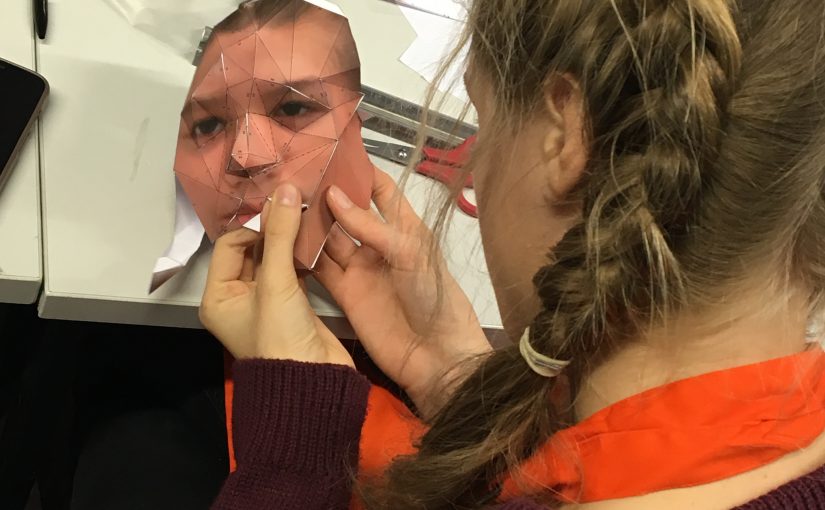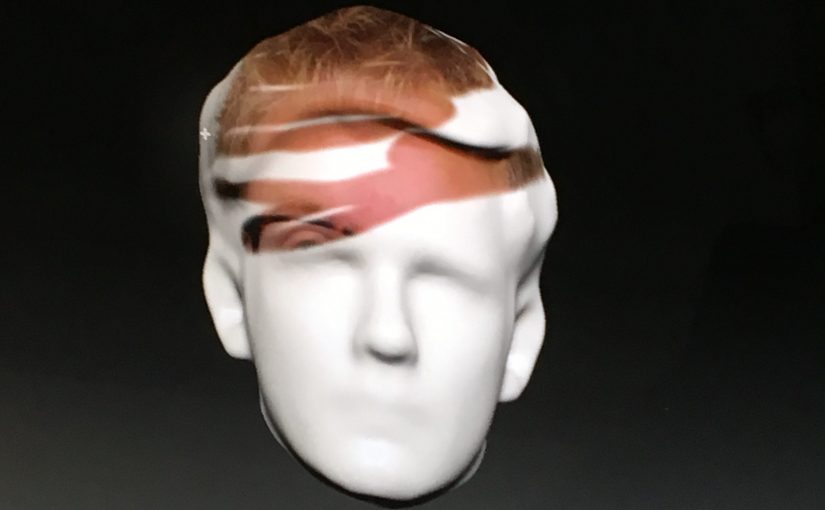This morning was all about print with Andy Reaney, Printmaking technician. Andy gave us a short introduction to the ideas around process led or rule bound making and showed the group artworks created by instructions set out by artist Sol le Witt as a starting point.
One wall of the room had laser cut offcuts in a range of different shapes, patterns and sizes. These random found ‘plates’ would be all we would be printing with for the session. We then got straight into the ‘games’ that Andy had set up to further constrain our decision making and get us to focus on the process as much as the outcome.
We threw dice to select the shapes we would use to relief print from, again to decide the colour ink we would use and again to locate where on the paper the plate would be positioned. Each member of the group took it in turns to print on the same piece of paper creating random layered shapes and colours which created some really playful effects.
The second ‘game’ involved the first person simply choosing which corner of the piece of paper to print their ‘plate’ and the rest of the group following their lead and over printing in the same place. The group worked away creating a whole wall full of collaborative prints.
The second half of the session members could use any plate, colour and composition they wished and everyone made a one off print. Having been introduced to the materials that we had to work with and the basic relief printing process there was no stopping us now that the constraints had been lifted. Some people chose to continue the abstract pattern making theme whilst others chose a more narrative approach, using the pre cut plastic shapes to make an image that told a story.
It was a really productive morning and everyone should be very proud of the fantastic work they created in just 3 hours. It was a brilliant introduction to printmaking but also to how limiting decisions can be a very creative process.



